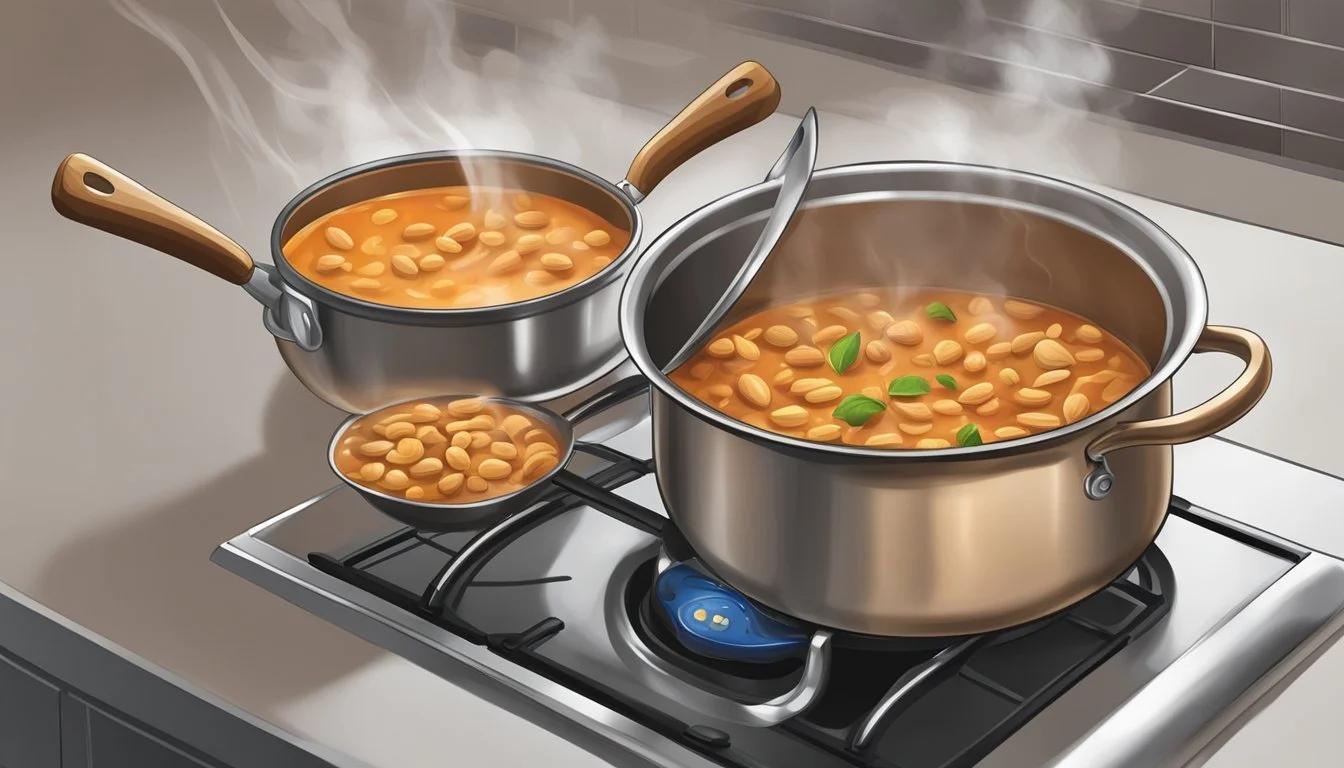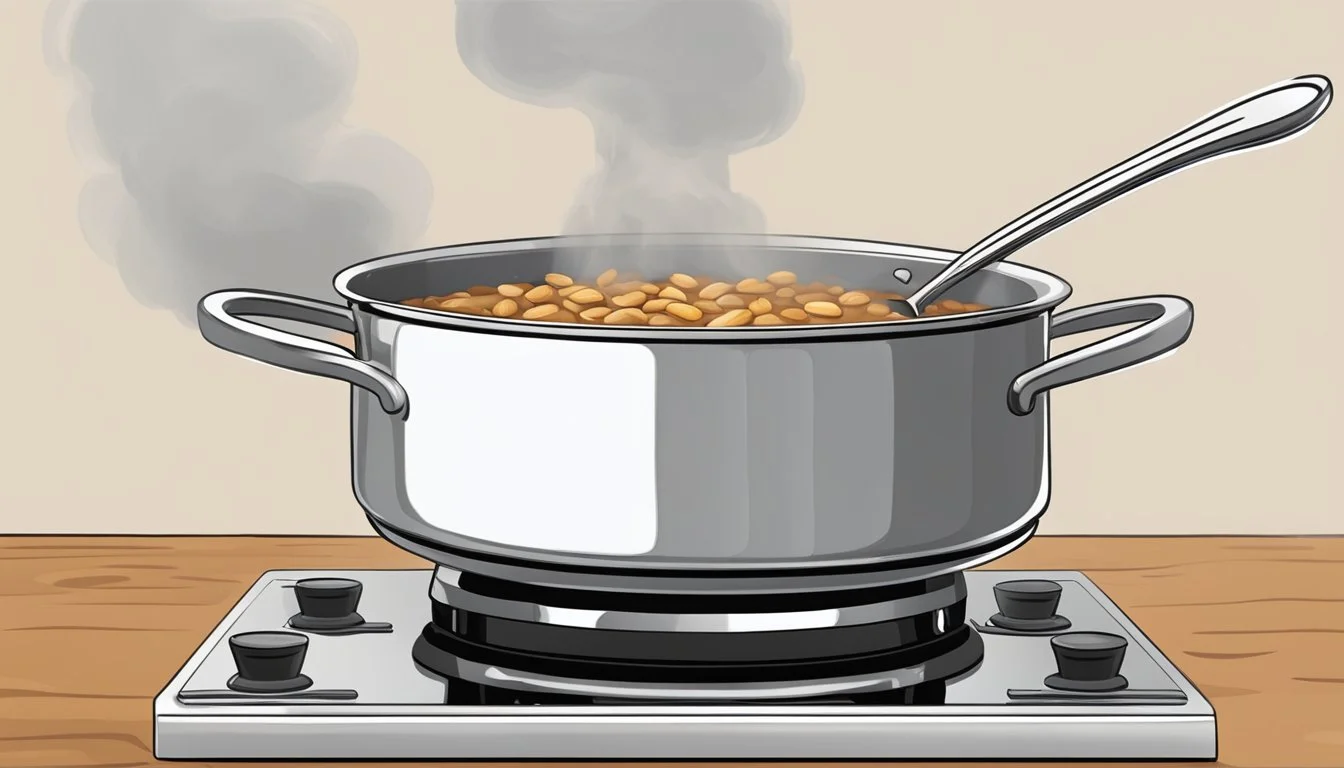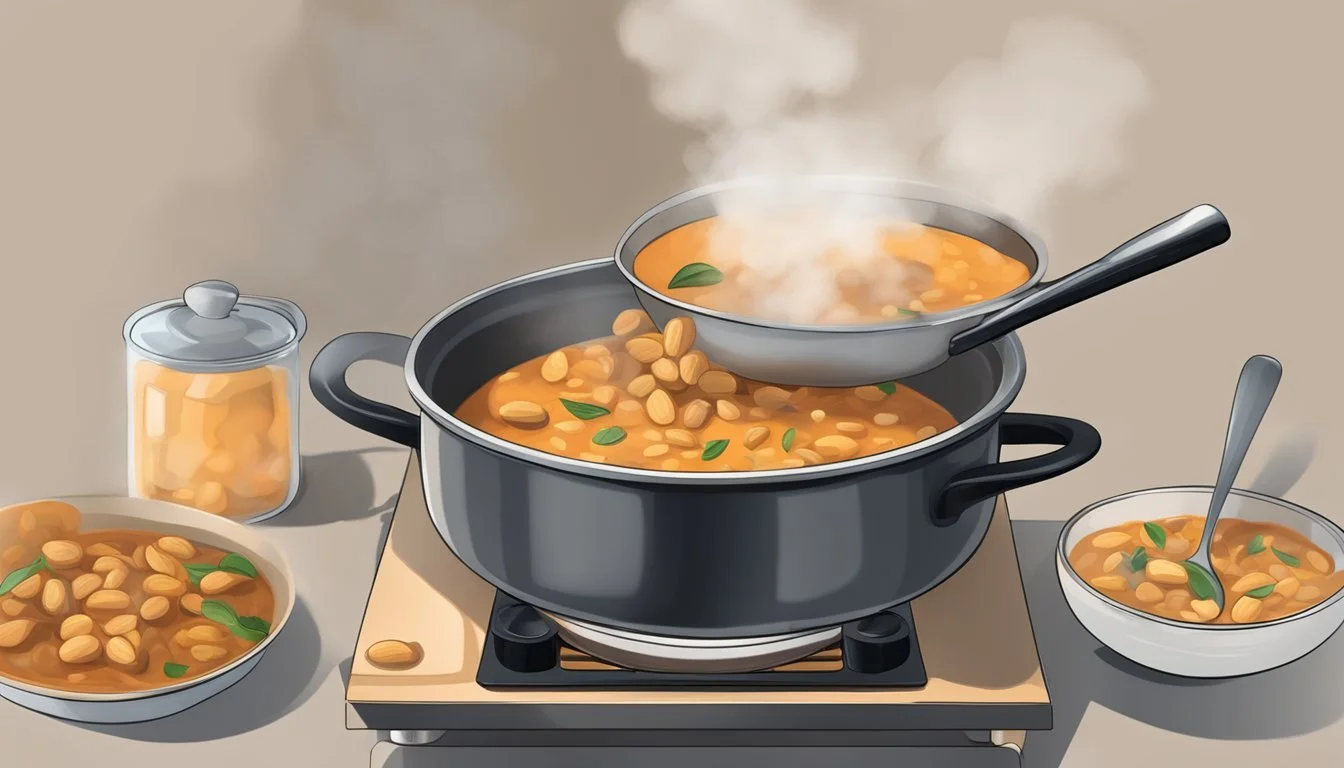Best Way to Reheat African Peanut Stew
Preserving Flavors While Warming Up
African peanut stew (What wine goes well with stews?), with its rich flavors and hearty ingredients, is a sumptuous and comforting dish enjoyed by many. The stew's complexity comes from a blend of spices, vegetables, and, often, chicken or other proteins, all brought together with the nutty richness of peanut butter. Given its depth of flavor and thick texture, leftovers are common, and they often need to be reheated. However, one of the challenges of enjoying this stew the next day lies in the reheating process, which can affect its taste and consistency if not done correctly.
The key to reheating African peanut stew is preserving its thick texture and the layers of flavor developed during the initial cooking process. Since the stew is robust and includes ingredients that can separate or become overcooked with excessive heat, careful reheating ensures the stew remains as flavorful as when it was first served. They must consider the balance of spices, the tenderness of any vegetables or meats included, and the consistency of the stew, aiming to retain all the qualities that make it a delightful dish.
Strategies for reheating vary from stovetop methods to the use of microwaves or ovens, each technique offering its own set of benefits. They need to use gentle heat and occasional stirring to distribute warmth evenly without causing the peanut butter to separate or the proteins to become tough. By employing the right reheating approach, they can enjoy the stew as if it were freshly cooked, savoring the harmony of flavors that African peanut stew is known for.
Understanding African Peanut Stew
African Peanut Stew, often known as Maafe, is a hearty and flavorful dish that is prevalent across West Africa. It showcases the region's culinary practices by utilizing locally sourced ingredients and traditional cooking methods.
Historical Significance
African Peanut Stew, also called Maafe, is a well-known delicacy with profound cultural roots in West Africa. The dish's origins can be traced back to the Mandinka and Bambara people of Mali. Variants of the stew have spread across the region, each carrying unique imprints from countries like Senegal, Gambia, Mali, Ghana, and Nigeria.
Peanuts, introduced by the Portuguese in the 16th century, became a staple crop in West Africa due to their suitability for growing in the Sahel region. Over time, the cultivation of peanuts became integral to West African agriculture and cuisine. In many West African countries, Maafe is traditionally served with rice or fufu, a staple side made from starchy vegetables like cassava. The dish is often prepared for family meals and communal gatherings, underscoring its importance as a means of social connection and cultural expression.
Essential Ingredients
Maintaining the integrity of African Peanut Stew starts with the proper selection of quality ingredients. These core components and seasonings are pivotal in reconstructing the stew's rich taste when reheating.
Main Components
Peanut Butter: The heart of the stew, which gives it a creamy texture and rich flavor. It’s recommended to use natural, unsweetened peanut butter for authenticity.
Tomatoes: Fresh or canned tomatoes provide acidity and depth to the stew's base.
Sweet Potatoes: Their inherent sweetness balances the stew and adds hearty substance.
Onion: Sautéed onion forms a foundational aromatic base for the stew.
Peanuts: Roasted peanuts add a crunch and enhance the stew’s nutty flavor profile.
Herbs and Spices
Ginger: Fresh ginger root imparts a warm, spicy undertone.
Garlic: Crushed or minced, garlic adds a pungent depth.
Cumin: Ground cumin lends an earthy note that complements the richness of the peanut butter.
Cayenne Pepper: A dash of cayenne pepper introduces a spicy kick.
Cilantro: This herb is often used as a garnish, introducing a bright, fresh flavor contrast.
Salt: Essential for balancing and enhancing the overall flavor palette of the stew.
Variations and Dietary Adaptations
African Peanut Stew is highly adaptable to regional tastes and dietary restrictions. This section explores how the stew can be modified to suit various cultural preferences and dietary needs without compromising its rich flavors.
Regional Variations
Regional variations of African Peanut Stew may include different proteins and vegetables. Chicken is a common addition in many recipes, providing a rich source of flavor and substance. In certain regions, cooks may use meat such as lamb or beef, while others might incorporate fish or keep it vegetarian with additional legumes. Vegetables commonly found in the stew can range from collard greens to okra, each lending their unique texture and taste.
Here's a brief look at ingredients by region:
West Africa: Chicken, collard greens, okra
East Africa: Beef, kale
Central Africa: Fish, spinach
Vegan and Gluten-Free Options
To accommodate a vegan diet, the chicken or other meats can be replaced with plant-based proteins like chickpeas or extra vegetables. Collard greens can easily remain a staple in the vegan version, providing necessary nutrients and fiber. For a gluten-free stew, ensure that any added broth is free of gluten-containing additives.
Here is a simple table highlighting Vegan and Gluten-Free Adaptations:
Adaptation Type Protein Substitute Vegetable Additions Vegan Chickpeas, Lentils Spinach, Sweet Potatoes Gluten-Free (No Change Required) (No Change Required)
In vegan variants, peanut butter acts as the unifying agent that brings together the variety of flavors and maintains the stew's signature creaminess. Gluten-free adaptations might not need specific adjustments as long as the ingredients used are naturally gluten-free or certified as such.
Preparation Tips
Reheating African Peanut Stew while maintaining its rich taste requires attention to both the cooking techniques used and the selection of ingredients paired with it. Whether one is working with leftovers or preparing the stew to be served later, these tips will ensure the stew remains flavorful and appealing.
Cooking Techniques
Stovetop Reheat: To reheat on the stovetop, gently warm the peanut stew over medium-low heat, stirring occasionally to prevent sticking. It's advisable to add a splash of stock or water to thin it slightly if the stew has thickened in the refrigerator, which will help distribute heat more evenly.
Microwave Reheat: In a microwave-safe container, cover the stew with a lid or microwave-safe plastic wrap. Heat on medium power in short bursts, stirring in between to ensure even reheating.
Ingredient Pairing
Grains: Pairing the stew with the right grain can enhance the dining experience. Here are recommended options:
Grain Type Description Rice A neutral base, best served with white or jasmine rice to absorb the stew's flavors. Brown Rice Offers a nuttier taste and firmer texture that complements the thick peanut stew. Quinoa A protein-rich alternative that adds a slight crunch and nuttiness. Couscous Its light and fluffy texture makes it a quick-absorbing side for the stew’s rich sauce. Millet A lesser-known grain with a mild flavor, it works well with the robust flavors of the stew.
Accompaniments: Enhance the stew with fresh aromatics or a drizzle of olive oil when reheating. This not only adds layers of flavor but also refreshes the taste. The addition of fresh vegetables can provide a contrasting texture to the softened veggies in the stew.
Remember, when reheating and pairing the peanut stew with grains or fresh sides, the goal is to complement and not overpower the stew's rich and peanutty flavor profile.
Reheating Techniques
When reheating African peanut stew, one's goal is to retain its creamy texture and rich flavors. Employing the correct reheating method ensures the stew remains thick, smooth, and flavorful without drying out any add-ins like sweet potatoes and tomatoes.
Stovetop Reheating Methods
Reheating on the stovetop is ideal for maintaining the stew's consistency. A heavy-bottomed pot on a low to medium heat allows for gentle reheating. One should frequently stir the stew to ensure even heat distribution, which also helps to preserve the stew's smooth texture without any ingredients sticking to the pot. If the stew appears too thick, one may add a small amount of water or stock to achieve the desired creaminess. A simple, yet important tip is to store leftovers in an airtight container to keep the flavors intact until reheating.
Microwave Reheating Methods
To reheat African peanut stew in a microwave, one should use a microwave-safe bowl. To prevent the stew from drying out, adding a tablespoon or two of water brings back its creamy consistency. Covering the bowl with either a microwave-safe lid or a damp paper towel helps in retaining moisture. Heat the stew in one-minute intervals, stirring between each session to ensure the heat spreads evenly. This method brings out the rich taste quickly and is quite suitable for portioned leftovers.
Enhancing and Retaining Flavor
To ensure the African Peanut Stew remains rich and palatable upon reheating, consideration must be given to enhancing and retaining its core flavors. One must focus on reintroducing freshness and adjusting spices and textures to the stew after it has been reheated.
Adding Freshness
To revive the stew's vibrancy, the introduction of fresh elements is pivotal. The incorporation of fresh garlic or ginger can infuse a potent zest into the stew. A splash of lemon or lime juice adds a bright acidity, balancing the rich nuttiness. For herbal freshness, a garnish of freshly chopped cilantro just before serving not only imparts a burst of color but also a clean, herby note that complements the stew's depth.
Spice and Texture Adjustments
To maintain a robust profile, a careful recalibration of spices may be necessary. A pinch of cayenne pepper can reignite some of the stew's fiery qualities if they have dulled. The stew's texture is equally important; one can reintroduce a desirable crunch with a handful of chopped peanuts sprinkled atop each serving. This not only contributes to the mouthfeel but also echoes the peanut flavor that characterizes the dish. Adjust the black pepper freshly ground to taste, ensuring that its pungent kick resonates through the complexity of the stew's flavors.






